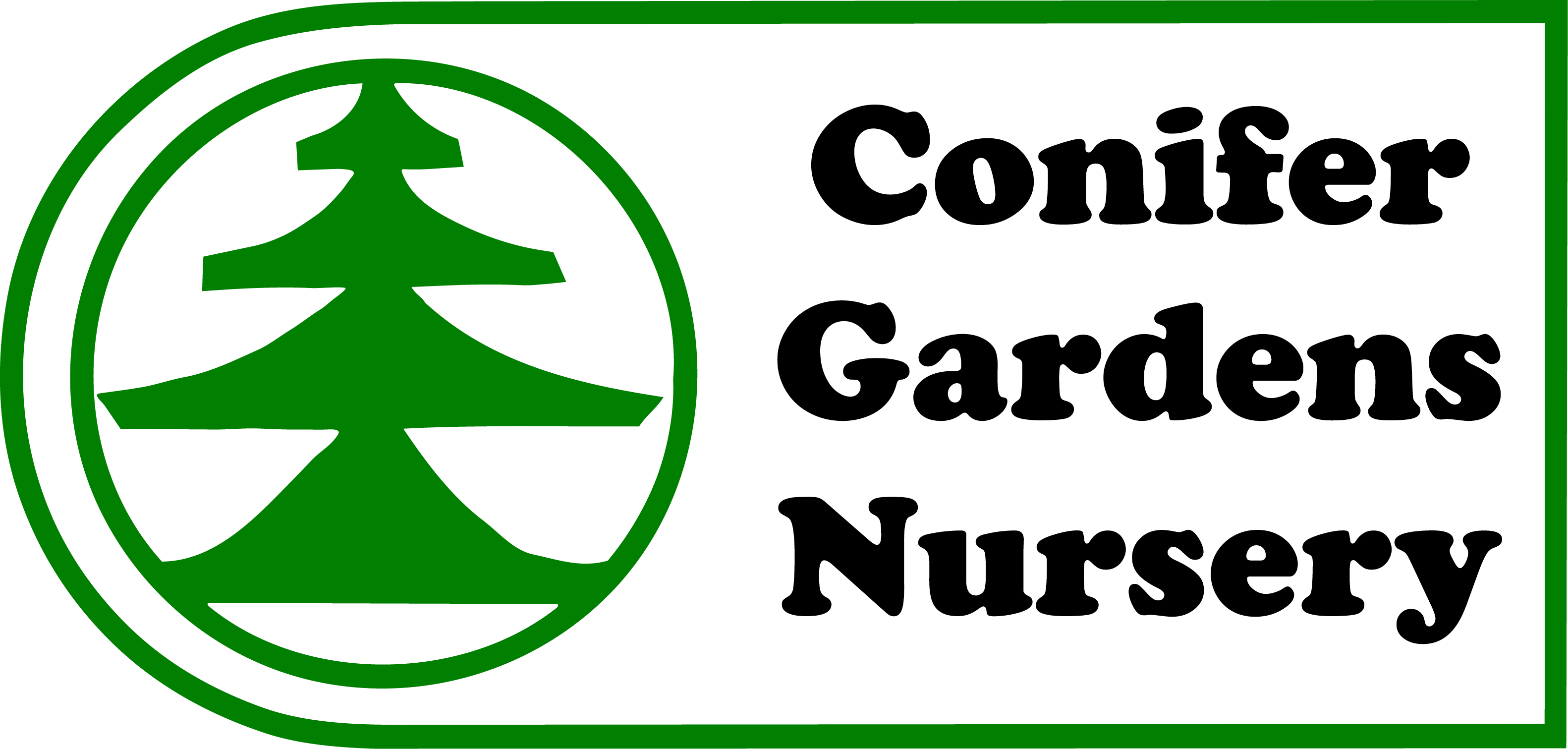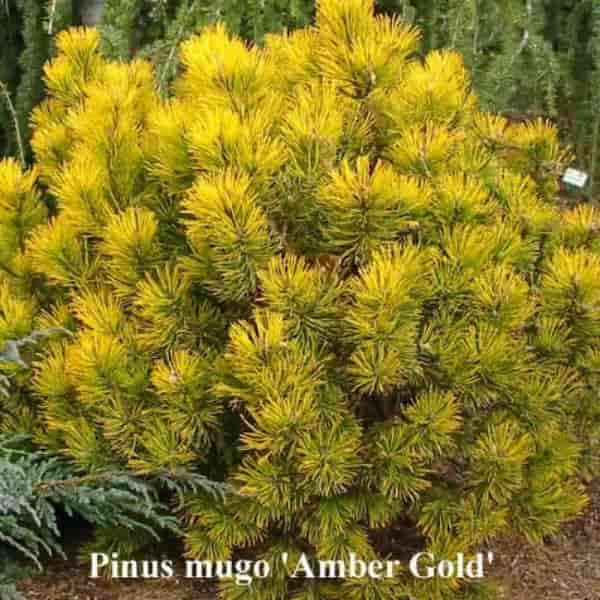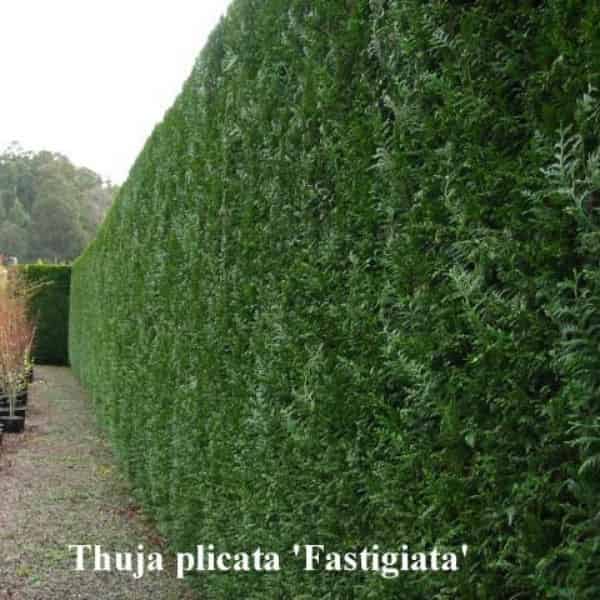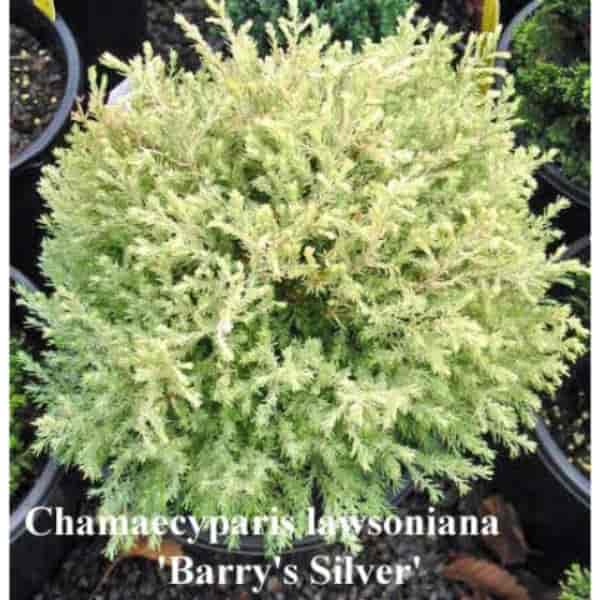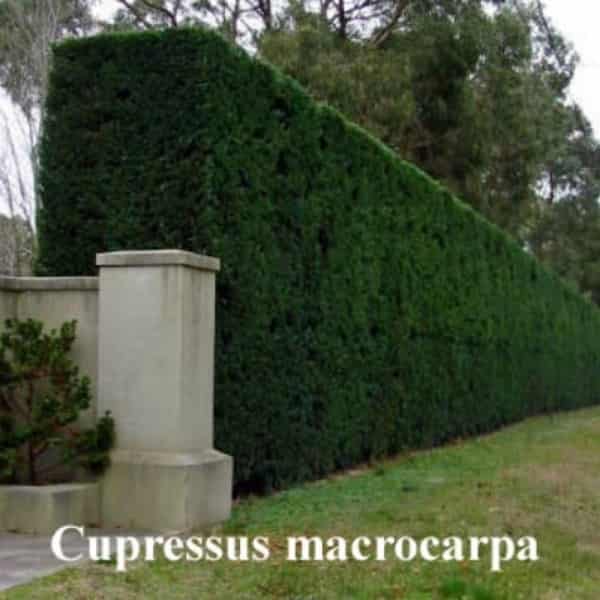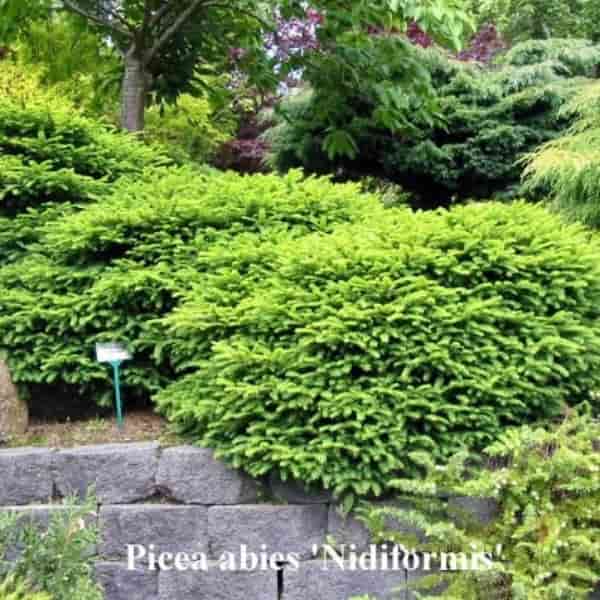These “True Cedars” are native to the mountains of the Western Himalayas and Eastern Mediterranean. The species, including the “Atlas Cedar” (Cedrus atlantica), the “Himalayan or Indian Cedar” (Cedrus deodara) and the “Cedar of Lebanon”, (Cedrus libani). Although these are tall, stately trees there are many dwarf, weeping or columnar cultivars. Cedars perform best in a sunny spot with well-drained soil. They prefer to be drier rather than wetter.
Often referred to as “False Cypress”, the four species have produced thousands of cultivars. They are native to North America, Japan and Taiwan.
Chamaecyparis lawsoniana “Lawson Cypress”
The cultivars have a wonderful range of sizes, colours, shapes and textures. Some people regard them as the most beautiful of all conifers. To bring out the best in these, they need rich, cool, well-drained soil.
Chamaecyparis obtusa “Hinoke Cypress”,
These are a much prized plants in Japan either as a garden plant or bonsai. The foliage is usually held in flattened fan-like sprays and can be either shades of green or yellow in colour. They will grow in sun or shade and perform best with rich, well-drained soil.
Chamaecyparis nootkatensis “Alaskan Cedar”
These will tolerate more soil moisture than the other species. There is a particularly beautiful weeping form.
Chamaecyparis pisifera “Sawara Cypress”
These mostly have soft, feathery foliage which responds very well to clipping. They are best when grown in a sunny position with rich, well-drained soil.
Chamaecyparis thyoides “White Cedar”
These do best in full sun where its foliage can change to purple tones in winter. Chamaecyparis grow native in North America, Japan and Taiwan.
Cryptomeria “Japanese Cedar”
A native of Japan, where it is revered as the national tree, and is valued for its grandeur and its fragrant wood. Its cultivars provide numerous forms, sizes and colours, many of which have a dramatic colour change in winter. They prefer ample moisture and protection from hot, drying winds. Best in light position but will tolerate partial shade.
Cupressocyparis “Leyland Cypress”
This hybrid between Chamaecyparis nootkatensis and Cupressus has produced many very popular cultivars. They are generally very fast growing, developing into large trees with attractive, colourful foliage and useful in creating large screens. They are very popular for trimmed hedges and are best in an open, sunny position to maintain a dense habit.
The “Monterey Cypress”, (Cupressus macrocarpa) and the “Arizona Cypress”, (Cupressus glabra) varieties make excellent evergreen hedges or specimens.
The “Kashmir Cypress”, (Cupressus cashmeriana) and the “Weeping Golden Cypress”, (Cupressus macrocarpa ‘Aurea Saligna’) make elegant lawn specimens in warm, sunny garden locations.
The “Pencil Pines”, (Cupressus sempervirens) are well known for their usefulness in narrow spaces.
Most varieties are fast growing and once established, will tolerate poorer dry soil.
The Junipers are arguably the most useful of all the conifers. There are ground covers, low spreading shrubs, small, medium and tall growing shrubs. They come in various shades of green, yellow or blue. They are very hardy; once established they require minimal watering. They respond very well to pruning, making them ideal for topiary.
Their natural habitat is in the northern hemisphere, from the Arctic, China, tropical Africa and the Central American mountains. The Juniper Berry is well known for flavouring Gin.
Abies (firs) Picea (Spruce) Pseudotsuga (Douglas Fir)
Both the Firs and the Spruces are renowned for their elegant shapely trees, especially the “Blue Spruce”, but there are also many delightful dwarf cultivars in a range of shapes and colours.
Mostly the needles on the Abies are rounded at the end; the Spruces are quite spikey and the Douglas Fir has soft needles. The cones on the Abies stand erect like candles, but hang below the foliage on the Picea and Douglas Fir.
They perform best with rich soil and abundant rainfall, but must be well drained. All require and open, sunny position to develop their symmetrical shape.
The numerous species within the Pines have produced an enormous range of cultivars in different shapes, sizes and colours. The following species have some of the most popular varieties:
Pinus densiflora Japanese Red Pine Pinus parviflora Japanese White pine Pinus thunbergii Japanese Black Pine
Pinus mugo Mountain Pine Pinus strobus Eastern White Pine Pinus sylvestris Scots Pine
The pines with a compact, dense habit need to be in an open, sunny position to keep the tight form. The more open, architectural varieties can be grown in dappled shade. They do not like wet soil and once established are extremely drought tolerant. The mouldy-looking substance sometimes seen on the roots is a very beneficial Mycorrhiza.
Thuja “Arborvitae”
Thuja occidentalis, “Arborvitae” has produced some beautiful cultivars which are very hardy, provided they are given adequate water during dry periods.
Thuja plicata, “Western Red Cedar”, in the taller forms are excellent for hedging. They are particularly useful in shadier or damper situation. They are one of the most elegant trimmed hedges.
Thuja orientalis is commonly called “Biota” of “Bookleaf”. The foliage is usually held in a flattened vertical sprays like a book. These are some of the hardiest of all conifers, particularly in hotter areas. They are also excellent for growing in pots. Once established, minimal watering is required. They need to be in an open, sunny position to maintain their compact habit. Taxonomists have reclassified Thuja orientalis to Platycladus, but we have continued to use the old name as it is so well known.
These are magnificent evergreen trees, with spreading, often horizontal, branches. Many have stiff, flattened, pointed foliage., some tightly overlapping, giving the branches a scaly appearance. The plants are usually have male and female cones on separate trees. The female cones are typically globose in shape, and the seeds of most species are edible.
Podocarpus “Plum Pine”
These are mostly from mountain forests in warm, temperate regions, but there are also some native to Tasmania and New Zealand. They are very useful in full sun or part shade, where they demonstrate good drought tolerance. The Buddhist Pine, Podocarpus macrophyllus, is much loved for bonsai.
The “Japanese Umbrella Pine” and the “Wollemi Pine” both claim history dating to the days of dinosaurs. The Sciadopitys display whorls of needles that resemble the spokes of an umbrella while the Wollemia features two rows of needles not unlike the spines on a Stegosaur’s back. They prefer a rich, soil in full sun or partial shade, where you can appreciate the distinctive character they afford landscapes and gardens. Ginkgo biloba also dates back to the dinosaur era (see under deciduous conifers).
Sequoia "Californian Redwood” and Sequoiadendron “Giant Redwood”
Both are famous tall growing trees. While many people travel to America to visit the Redwood forests, Victoria had two impressive ones; one in East Warburton and one in Beech Forest. The Californian Redwood is very fast growing, trims well making it ideal for hedging. The Giant Redwood or “Big Tree” is quite slowing growing, showing its tapering straight trunk from a young age.
Taxus “Yew” and Cephalotaxus “Japanese Plum Yew”
The “English Yew” or “Irish Yew” are the well-known in the UK for the age of some of the specimens also the shearing and shaping of them. Available in dark green or yellow, moist, but well drained soil is essential. The “Irish Yew” forms a narrow, upright column.
The “Japanese Plum Yew” is also one of the best conifers for shade. Available as a short erect shrub, a low spreading shrub or a ground cover.
The three species of Athrotaxis are long lived trees native to Tasmania are rare in cultivation. They are best grown in areas protected from the hot summer sun and where there is good rainfall.
microbiota “Siberian Cypress”
One of the ground covering conifer that dramatically change colour from deep green to bronze-purple in winter. Works well as a juniper substitute. Native to Russia, it is very handy for tolerating a shady position.
Microcachrys “Creeping Pine”
An attractive dwarf conifer from Tasmania, has a low, creeping growth habit and dark green foliage.
Only one species, dolabrata, it is related to Thuja but is quite distinct. The broader, thicker leaves are very shiny. Often planted around temples and gardens in its native Japan. Needs adequate moisture as and does best in part shade.
Most people think of conifers as evergreen trees and shrub, but actually there are several beautiful deciduous species. They all have soft needle-like foliage which is a beautiful fresh green in spring. In autumn each turns to a distinctive colour.
We have the following:
ginkgo “Maidenhair Tree”
The ginkgo biloba tree has been referred to as a “living fossil.” This is because it is the only living member of the Ginkgoales family. Its earliest fossils date back to 270 million years ago, which puts this tree on earth with the dinosaurs. Instead of the typical conifer foliage, it has leaves resembling the “Maidenhair Fern”. There are many cultivars including some dwarf varieties. Grows well in climates with wet winters and hot summers and is extremely tolerant of pollution.
Larix “Larch”
The Larches turn a beautiful yellow in autumn. They are best in cooler areas. Available either as a tree or a weeping shrub.
metasequoia “Dawn Redwood”
Known only as a fossil until it was re-discovered in China in 1941. A beautiful, pyramidal tree, the foliage changes to a pink-salmon colour in autumn. A golden form also available. Best in a sunny position with moist soil.
Pseudolarix “Golden Larch”
Native to China. Forms a broad pyramid tree with open, horizontal branching. The autumn colour is a brilliant yellow colour. Moist, well-drained soil and full sun is best.
taxodium “Bald or Swamp Cypress”
These deciduous conifers that thrive in very wet places, including swamps. The green foliage turns to a rich russet colour in autumn. A tall growing tree and when grown near water “knees” that are woody projections, sprout above water level and grow vertically from the knobby roots. A weeping shrub form is also available.
